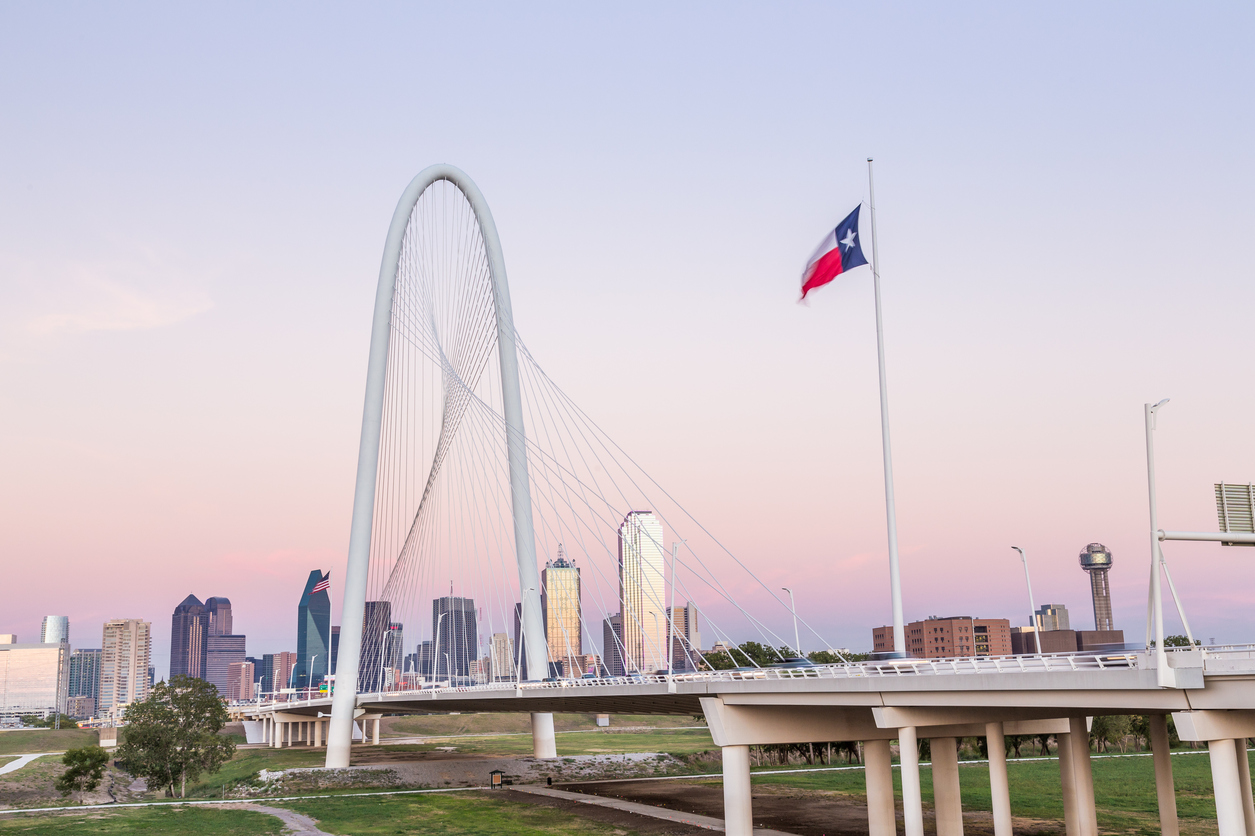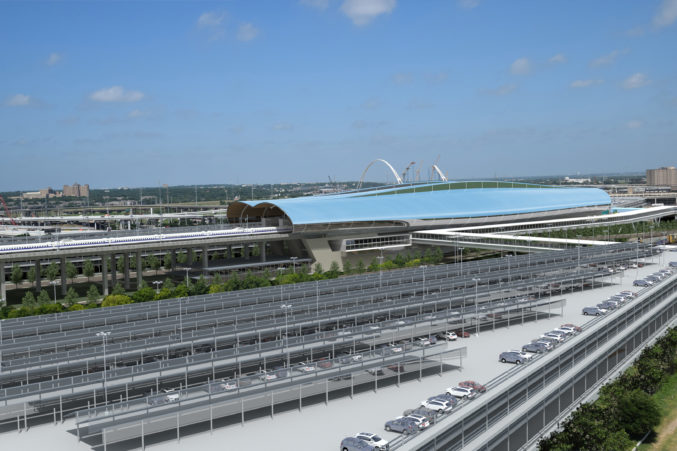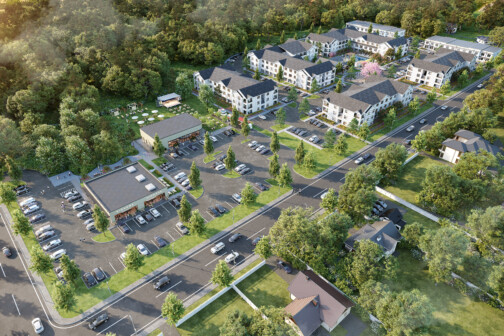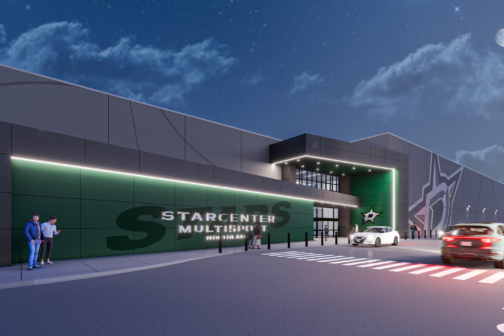In a region as deep, broad, and active as Dallas-Fort Worth, it would be impossible for any individual to single-handedly keep on top of the market’s commercial real estate news. That’s why we invite a select group of individuals to share their on-the-ground insights as contributing editors to our digital news site, D CEO Real Estate. Our 2023 lineup of writers includes industry veterans like Bill Cawley of Cawley Partners, Herb Weitzman of Weitzman, and Diane Butler of Butler Advisers, as well as emerging leaders like Allison Johnston Frizzo of Hart Commercial and Dan Harris of Stream Realty Partners. They represent all product types and specialties, from appraisal to zoning. Throughout the year, you’ll find commentaries on emerging trends, surprising stats, leadership strategies, market updates and outlooks, and more. Turn to D CEO Real Estate for these insights—and be sure to sign up for our weekly newsletter (distributed on Thursday afternoons) to stay informed about this dynamic market and get information you won’t find anywhere else.
A 40-Year Running Perspective on Commercial Real Estate
Originally Published Dec. 15, 2022
Running and real estate will be forever linked for me. That linkage began in 1982, the year of my first full marathon and my first full year in commercial real estate communications. This month, 40 years later, I completed the BMW Dallas Marathon.
Anniversaries and long races have one thing in common: They offer time to reflect. In 1982, the White Rock Marathon attracted 3,500 runners. This year, more than 14,000 crossed the finish line. And just as the marathon has grown, so has Dallas. In 1982, Dallas’ population totaled 900,000. The DFW metro area population totaled 2.6 million. Dallas’ population is now around 1.3 million, while DFW is 7.6 million.
Forty years ago, about 250 souls called downtown home. Downtown remains an important office market, but old and vacant office projects now house residential, hotel, retail, and other uses. And downtown’s core population has jumped to 15,000.
Today, tech has altered running for the better. Now you can search and shop with your phone. In the 80’s, department stores dominanted, and downtown was home to three. These former titans failed to evolve and left vacancies in their wake. But yesterday’s vacancy is today’s tenancy.
In 1982, DFW’s retail inventory totaled 80 million square feet. In 2022, that inventory surpasses 200 million. But today’s market is far healthier, thanks to transformed retailing and the emergence of tech and mortar.
Someone once told me that people run because they have a strong sense of tomorrow—what you do in the present benefits your future. Real estate is an investment in the future. Massive investments have been made to make things better. From a runner’s perspective, this includes the Katy Trail, the Santa Fe Trail, and other trails. And as these investments attract crowds, they continue to spark development.
As you can see, the marathon gave me time to think about the big Rs in my life: real estate and running, and the way both offer a great sense of potential and possibility. It’s all about that strong sense of tomorrow.
Read the original post here.
Ian Pierce | Senior Vice President of Communications, Weitzman
Effective Leadership Starts With a Strong Sense of Community
Originally Published July 14, 2022
Our DFW real estate community is unique in the sense that even when we’re competing against each other, we’re also quick to celebrate everybody’s wins and successes, both personally and professionally. When I look back at the strong leadership and mentorship opportunities I’ve had, it inspires me to help define what leadership means and put into action how our team can make a difference.
Our world has significantly changed in the past few years, and the expectations of a leader are different than what they once were. What I’ve realized is that all strong relationships and leadership roles start with a strong sense of community.
A community has to be more than just a physical place where people come into work every day. The sense of community that I’ve been lucky enough to help cultivate over the years has come from impromptu office happy hours, luring people in to talk to me with a candy bar, or having a good laugh over a bad meeting and not taking it too seriously.
Time and time again, we’ve seen our best results and biggest wins as a business when we work together collaboratively. Sure, work can be done over email if it’s necessary, but 10 out of 10 times, it’s quicker to just walk over to someone’s desk to get a response or to set up in a conference room to work through a client issue.
Aside from conducting business, being among your people is just better. For me, collaborating via email and Zoom during the pandemic was isolating. I love being around people and getting to hear others across the floor celebrating a win or cheering when they find out a teammate has been promoted. The experiences help form the foundation of a strong community.
There are other aspects to being a leader that are incredibly important, as well. Fortunately, I got to learn from the GOAT (greatest of all time), Roger Staubach, early in my career. Integrity, empathy, fairness, and valuing diverse people and backgrounds are the pillars of my personal leadership philosophy. But none of it means anything without community.
Read the original post here.
Brooke Armstrong | President of Texas, Oklahoma, and Arkansas | Advisory Services, CBRE
A Shift from Data Center Oversupply to Stark Undersupply
Originally Published Aug. 18, 2022
The data center industry in Dallas and across the country was picking at a consistent pace for years, until the market exploded with a record year of sales and output in the wake of COVID. As reported in JLL’s Data Center Outlook report, 2021 absorption reached a record-breaking 885.7 MW across the U.S., including a 173 percent increase in DFW. This spike, paired with a host of economic factors, is putting added pressure on users to secure this essential part of their real estate portfolio as the world becomes more reliant on digital storage.
Over the last nine months, the DFW market saw a shift from an oversupply of data center capacity to a stark undersupply. Panic buying by major cloud service providers and hyper-scalers of large swaths of capacity holdings (many purchasing at projects that haven’t even broken ground) is fueling this shift.
For the providers in charge of building and delivering products, issues with the supply chain have forced construction times to run longer. What used to be a six- to nine-month build is now 12 to 18 months. Providers can’t build data center space fast enough to meet the demand. Hyper-inflation is also wreaking havoc on construction materials.
To make matters even more dire, we are seeing a land availability shortage in regions known for being data center hubs. North Texas is no exception, and we see this replicated in major hubs across Northern Virginia, Chicago, Phoenix, the Pacific Northwest, and Silicon Valley.
Given the many hurdles in today’s market, we are preparing our clients to think ahead. Even Fortune 500 enterprise users, who typically lease less space than the major cloud service providers, are feeling the pressure and are working quickly to secure the capacity they will need over the next five years, right now.
To put it bluntly, if your business will need data center access but hasn’t started thinking about what your needs will be in 2027, you’re already behind. So, take this as a sign to get started today.
Read the original post here.
Curt Holcomb | Executive Vice President, JLL
2023 Contributing Editors
Cribb Altman, JLL
Jon Altschuler, ALT+CO
Susan Arledge, Newmark
Brooke Armstrong, CBRE
Danny Baker, CBRE
Mark Becker, Cushman & Wakefield
Patrick Benoist, CBRE
Cliff Booth, Westmount
Bo Bond, Cushman & Wakefield
Beth Bowman, Greater Irving Las Colinas EDC
Linda Burns, Burns Development Group
Diane Butler, Butler Advisers
Kim Butler, HALL Group
Bill Cawley, Cawley Partners
Chuck Dannis, National Valuation Consultants
Lynn Dowdle, Dowdle Real Estate
Steven Duong, AECOM
Lucy Durbin, CBRE
Sharon Frieberg, Fischer
Ethan Garner, JLL
Grant Gary, The Woodmont Co.
Mike Geisler, Venture Commercial Real Estate
Marsha Getto-Aikens, HKS
Shawn Givens, Colliers
Arthur Greenstein, Douglas Elliman
John Griggs, Presidium
Joey Grisham, Anna EDC
Robert Grunnah, Younger Partners
Asher Hall, Cushman & Wakefield
Dan Harris, Stream Realty Partners
Jordan Harper, Harrison, Walker & Harper
Rogers Healy, The Rogers Healy Cos.
Will Hendrickson, Granite Properties
Emily Hoffman, Colliers
Curt Holcomb, JLL
Scott Jessen, Citadel Partners
Allison Johnston Frizzo, Hart Commercial
Seth Koschak, Stream Realty Partners
Mike Kennedy, Avison Young
Beth Lambert, Cushman & Wakefield
Steve Lieberman, The Retail Connection
Tanya Hart Little, Hart Commercial
Danny Lovell, The Ranier Cos.
Wendy Lopez, AECOM
Jackie Marshall, CBRE
Jeremy McGowan, CBRE
Terrence Maiden, Russell Glenn
Tiffany Marano, Stream Realty Partners
Linda McMahon, The Real Estate Council
Jessica Miller Essl, M2G Ventures
Rhett Miller, Stream Realty Partners
Marshall Mills, Weitzman
Nelson Mitchell, HistoryMaker Homes
Scott Morse, Citadel Partners
Dan Noble, HKS
Jade Parrish, CBRE
Ian Pierce, Weitzman
Fred Ragsdale, JLL
Dev Rastogi, AECOM
Grant Raymond, Cushman & Wakefield
Ward Richmond, Colliers
Jayme Schutt, JLL
Alan Shor, The Retail Connection
Cindy Simpson, Gensler
Katy Slade, Mintwood Real Estate
Eliza Solender, Solender/Hall Inc.
Jack Stone, Greysteel
Daniel Taylor, Colliers
Steve Triolet, Younger Partners
Jason Weeks, Brasfield & Gorrie
Herb Weitzman, Weitzman
Michele Wheeler, Jackson-Shaw
Matt Wiser, Stream Realty Partners
Lindsay Wilson, Corgan
Carlos Vaz, Conti
Keyan Zandy, Skiles Group
Get the D CEO Newsletter
Author









